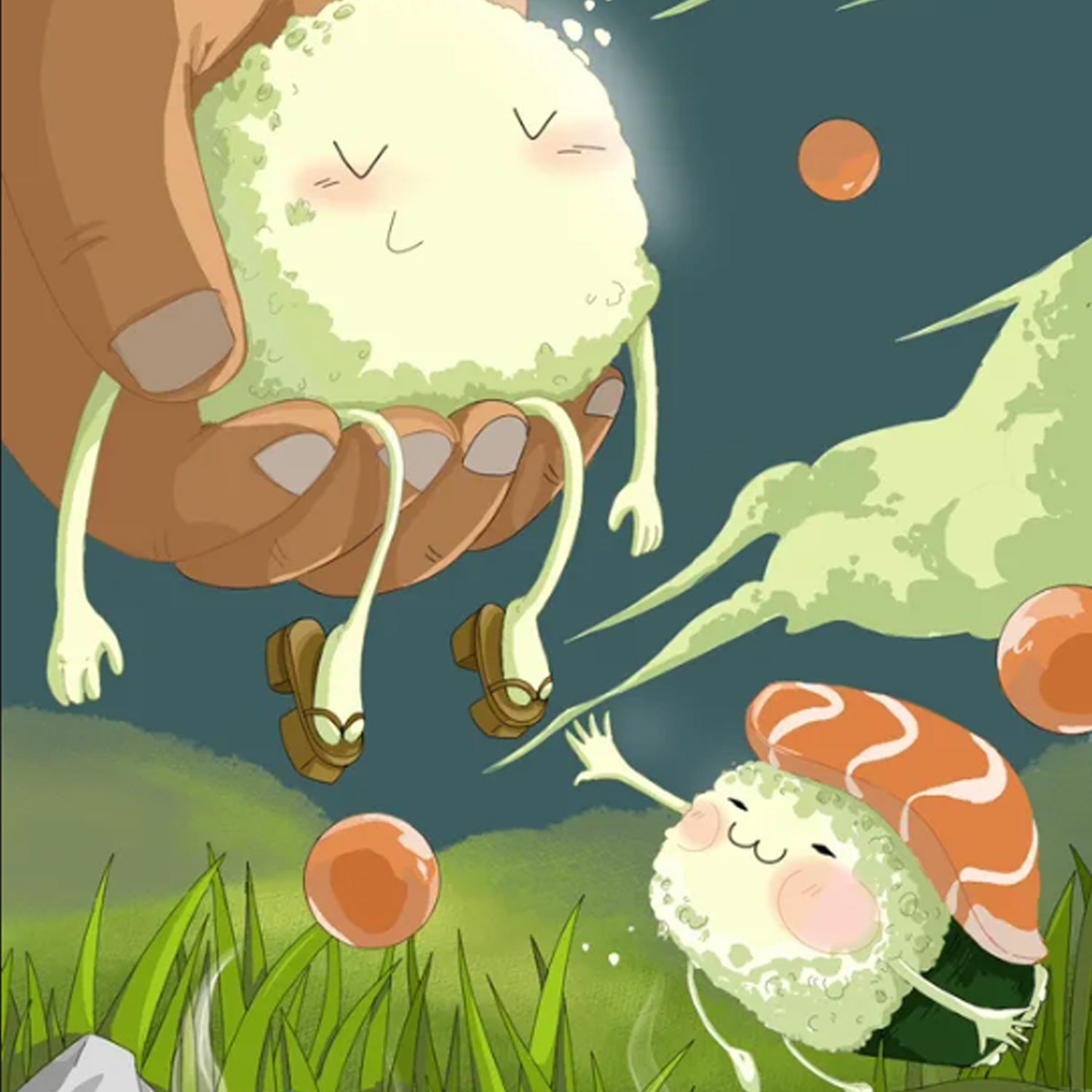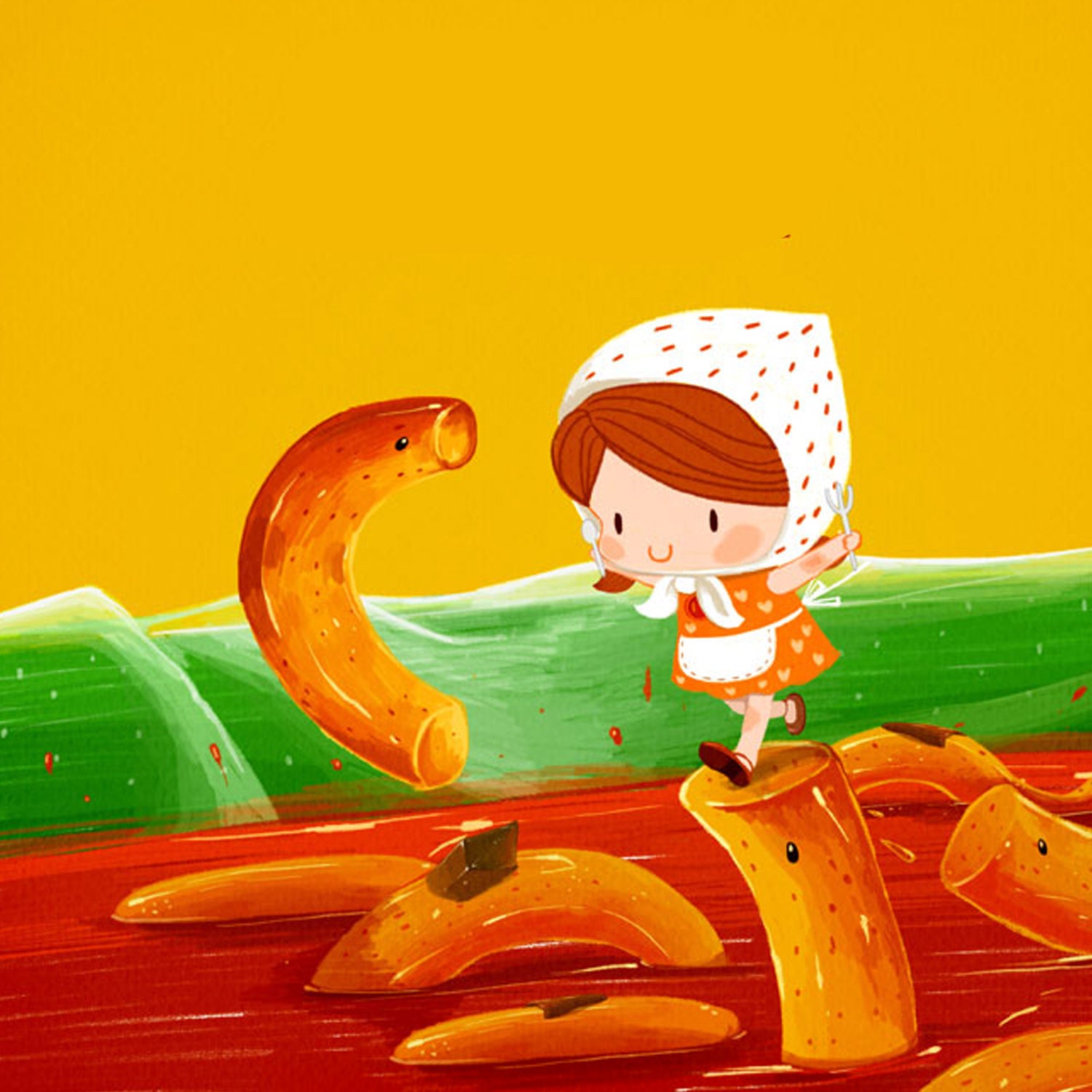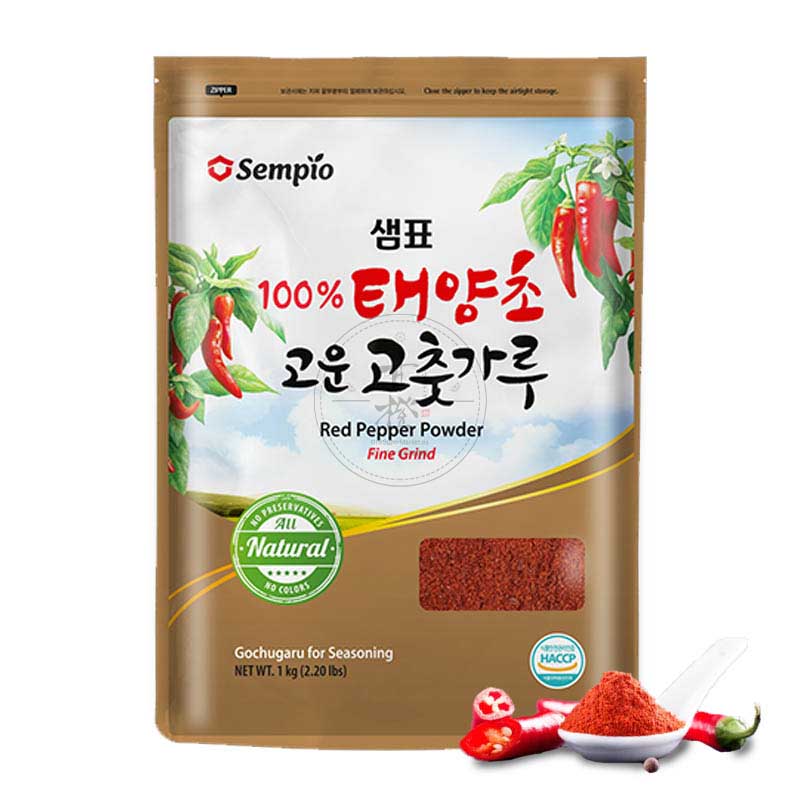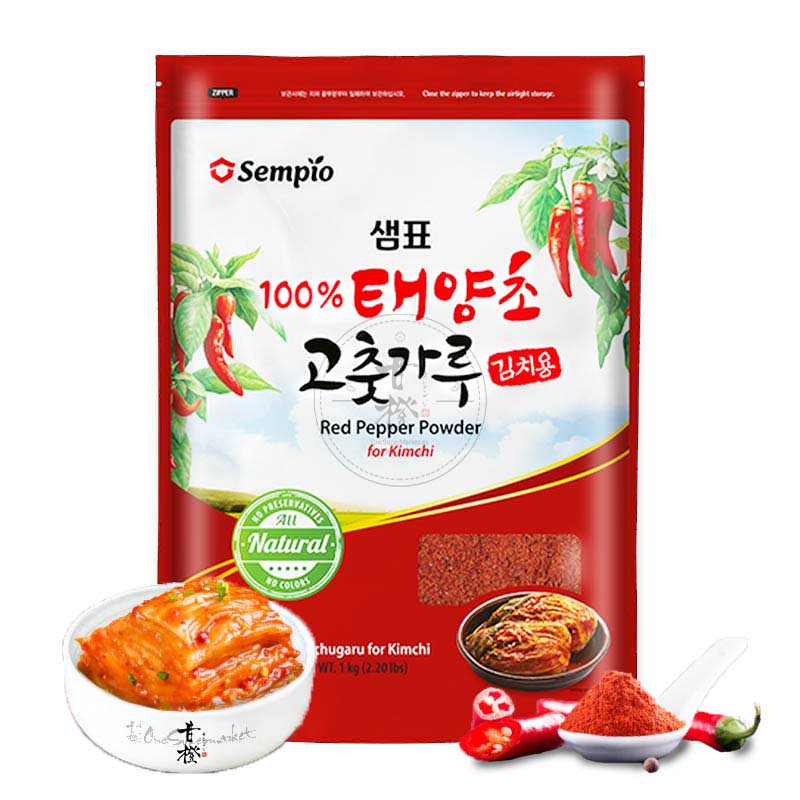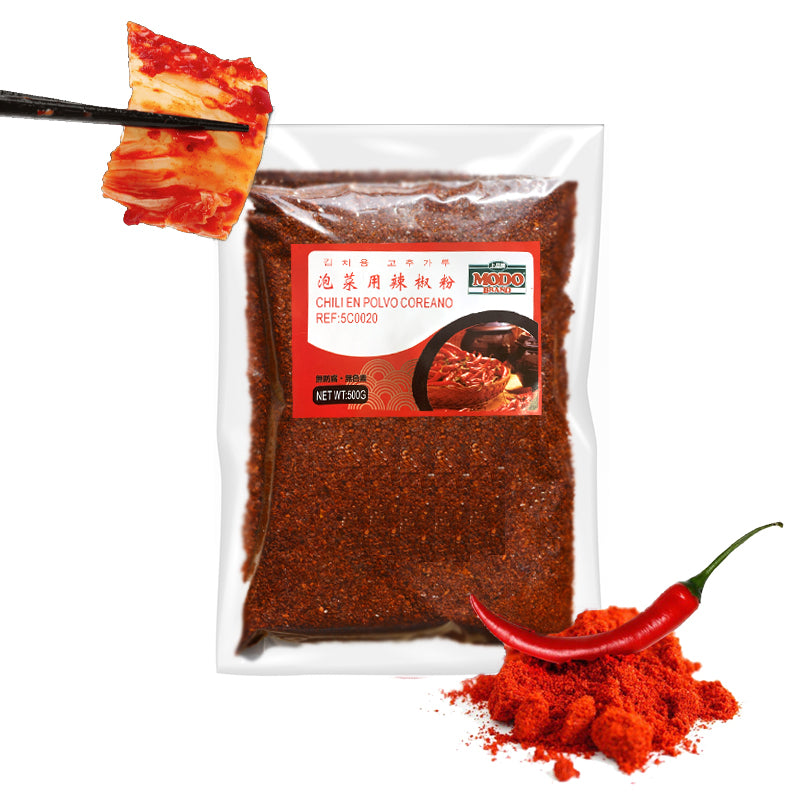Gochugaru
The Red Powder That Transforms Korean Cuisine
Gochugaru , also known as Korean chili powder, is a key ingredient in Korean cuisine. This spicy powder is made from dried peppers and is used in a wide variety of dishes, including the famous kimchi .
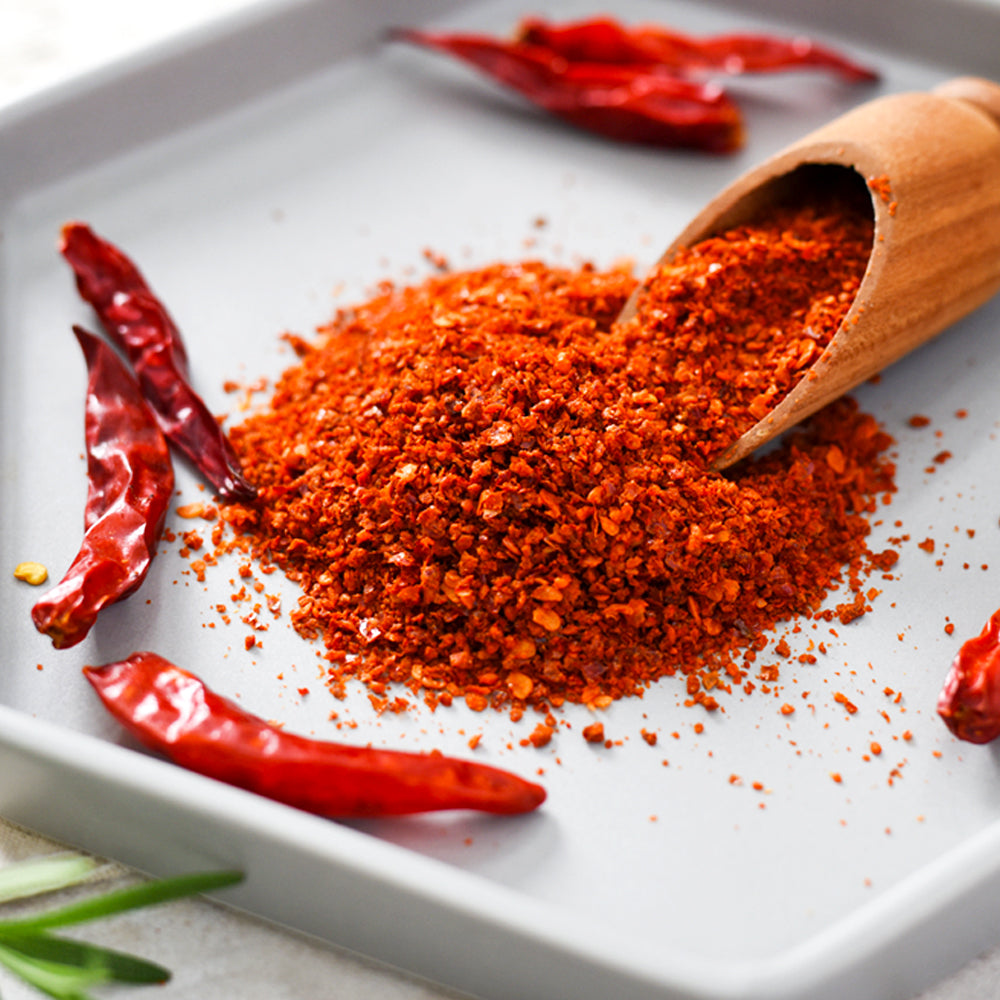
What is Gochugaru?
Gochugaru is a Korean term ( 고추가루 ) that encompasses a variety of English names, such as Korean chili powder, Korean chili flakes, hot pepper flakes, and red pepper flakes. Essential in Korean cuisine, Gochugaru is characterized by its vibrant color and its combination of spicy flavors with a touch of sweetness.
Made from dried red peppers and ground to a particular texture, Gochugaru is distinguished by being milder and less pungent compared to other chili powders, such as cayenne. The meticulous dehydration and grinding process results in a powder that is neither too coarse nor too fine, maintaining a unique texture and flavor.
Importantly, Gochugaru has a rich history and is considered a key ingredient in Korean cuisine . It is widely used in making kimchi , Korea's famous fermented dish, as well as gochujang (Korean chili paste), and various stews, soups, and side dishes that incorporate a spicy, rich flavor.
The quality and spiciness level of Gochugaru can vary depending on its origin and the specific growing conditions of the peppers. It is essential to carefully select this ingredient to achieve the perfect balance of flavors in dishes.
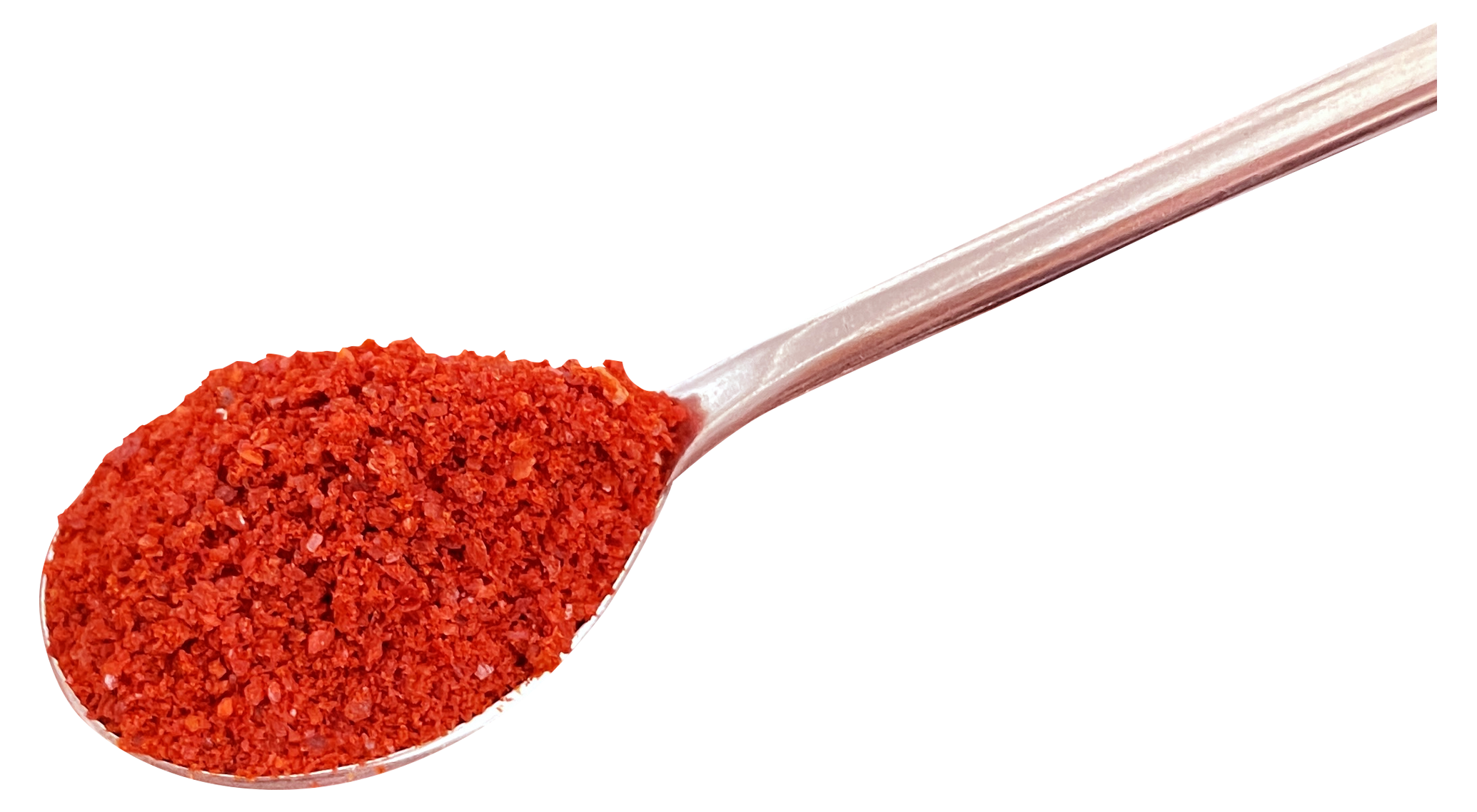
History and Origin
Like all hot peppers, those used to make gochugaru probably originate in Central America . Popular history tells that they were brought to Europe as part of the Columbian Exchange and then arrived in Asia.
However, some Korean historians claim that they were present in Korea as early as the 13th century. This opinion is controversial, and according to many experts, there are no records of Koreans using hot peppers before the 16th century.
Quality and Drying Process of Peppers
The best peppers for gochugaru are those that have been classified as taeyangcho , which means sun-dried. While sun-dried peppers are the traditional option, machine-dried ones are more common and less expensive. Sun drying is said to be important for both the color of the spice and its spiciness level. Dried, seeded peppers are ground to a texture halfway between coarsely crushed red pepper flakes and fine cayenne powder. Since these peppers have had their seeds removed, the resulting spice is a bright, uniform red.
It is helpful to know what real gochugaru should look like, as many of these products are incorrectly labeled.
Gochugaru Flavor Profile
The flavor profile of gochugaru is more complex than the crushed red pepper flakes typically found in the supermarket. The dried peppers used in gochugaru are fruitier and add a touch of smokiness. Simply put, they offer more than just spiciness .
Is Gochugaru Spicy?
The spiciness level of gochugaru can vary significantly, ranging from approximately 1,500 SHU up to 10,000 Scoville heat units. To put it in context, the jalapeño, a pepper that is commonly known for its heat, generally ranges between 2,500 and 8,000 Scoville heat units. Therefore, Gochugaru can be as spicy as a jalapeño or even hotter. Some Korean recipes use gochugaru liberally, so it's important to identify milder versions of the spice if you don't want an overly spicy dish.
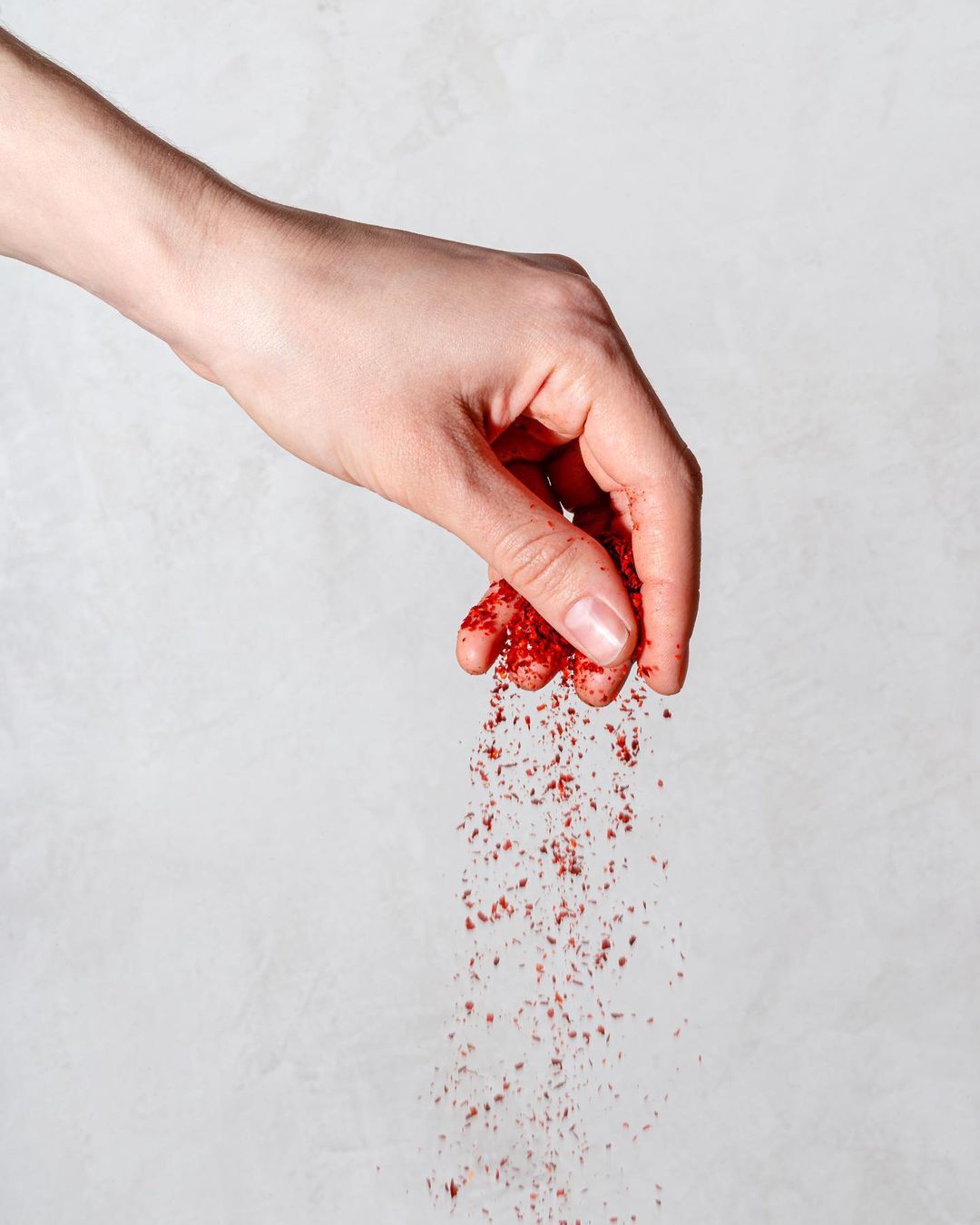
Common Uses and Storage
Gochugaru is found in a wide variety of Korean dishes. It is the traditional spicy element in kimchi , and is responsible for the reddish hue of fermented cabbage. Additionally, gochugaru is used in other dishes such as spicy noodle soup called jjampong and spicy meat soup called yukgaejang.
It is necessary to keep the gochugaru in a cool, shady place after opening the package. It can be stored in an airtight container in the refrigerator. If you want to store it for a longer period, it can also be stored in the freezer.
Gochugaru Vs Red Pepper Flakes – How Do They Compare?
Red pepper flakes are the same product that is sometimes known as crushed red pepper . You may see red pepper flakes/crushed red pepper in salt shakers on the tables at your favorite pizzeria. They are both dried forms of hot pepper, but how are they different? Let's compare the two.
How is gochugaru different from red pepper flakes in shape?
If you wanted to ignore the details, you could say that gochugaru and red pepper flakes are the same spice. After all, gochugaru is essentially the Korean equivalent of crushed red pepper. "Gochu" means hot pepper and "garu" means powder. However, there are differences .
First of all, the consistency is slightly different. While red pepper flakes have an obvious "flake" shape, gochugaru tends to be ground a little finer. It falls somewhere in between cayenne pepper powder and red pepper flakes in terms of how finely ground it is.
And although red pepper flakes and gochugaru are both flake-shaped, you would still notice a difference if you placed them side by side. Most gochugaru does not contain seeds and will therefore have a uniformly red appearance. Red pepper flakes usually contain seeds and will have a red and white mottled appearance as a result.
Which one is spicier?
Let's start with the chilies used. Gochugaru typically uses Korean chili, a mild chili (about 1,500 Scoville heat units or SHU, a heat similar to that of poblano or ancho peppers). Although it comes in mild (deolmaewoon) and hot (maewoon) versions, so the chiles may vary. Red pepper flakes tend to be a blend of chili peppers, but the base is usually the cayenne pepper, which contains significant medium heat (30,000 to 50,000 SHU). Other chiles used are usually milder, such as dried red serranos, ancho peppers, and red jalapenos.
But the chiles used aren't the whole story in terms of heat. Shape also plays a role here. Most gochugaru consists of only the dried walls of the pepper fruit, which is typically the least spicy part of a chili. Red pepper flakes, on the other hand, usually contain the majority of the pepper, not just the walls of the fruit, but also the white membrane of the pepper and the seeds. The membrane usually has the highest concentration of capsaicin (which gives peppers their heat), so red pepper flakes can reach all the heat of the peppers used in their preparation.
Therefore, let's assume that both mixtures of ground chiles have wide ranges. Gochugaru will range from 1,500 to 10,000 SHU (depending on mild/spicy versions), while red pepper flakes will range from 15,000 to 30,000 SHU.
Is the taste different?
Gochugaru offers a smoky sweetness that you won't get from red pepper flakes. Cayenne pepper, the chili base of most red pepper flake variants, is known for having minimal flavor in addition to its heat. So if you're looking for something that provides a subtle flavor to your food, go for gochugaru. If you simply want heat, choose red pepper flakes.
Can you use gochugaru instead of red pepper flakes? And vice versa?
Use gochugaru as a substitute for red pepper flakes if mild heat is what you need. It's a great alternative if the spiciness level of red pepper flakes is too much for you. It will work in any application that requires red pepper flakes. The big difference will be the appearance, as gochugaru is seedless and generally has a slightly finer texture. Red pepper flakes are a viable but not ideal substitute for gochugaru, especially when it comes to applications like kimchi. Korean dishes that call for gochugaru tend to have the sweet and smoky properties of the pepper as key aspects of their flavor profiles.
When should you use gochugaru? Red pepper flakes?
Use gochugaru in your homemade kimchi or in Korean recipes that depend on its specific qualities. You'll also see it included in dipping sauce recipes, especially where smokiness is part of the flavor equation.
Red pepper flakes have a wider range of applications besides being used to flavor pizza. It is an excellent spice to have on the table, next to salt and black pepper; Add it to any dish that can use moderate heat. Its flake shape makes it easier to handle than other ground alternatives, like cayenne pepper powder, which could easily spill and ruin a dish. Plus, the flakes sit on top of the food, rather than soaking into it like powders do, making it a much more visible sign of heat inside a dish.
And although both red pepper flakes and gochugaru are flakes, you would still notice a difference if you placed them side by side. Most gochugaru are seedless and will therefore have a uniformly red appearance. Red pepper flakes usually contain seeds and as a result will have a mottled red and white appearance.
Buy Gochugaru
Blog
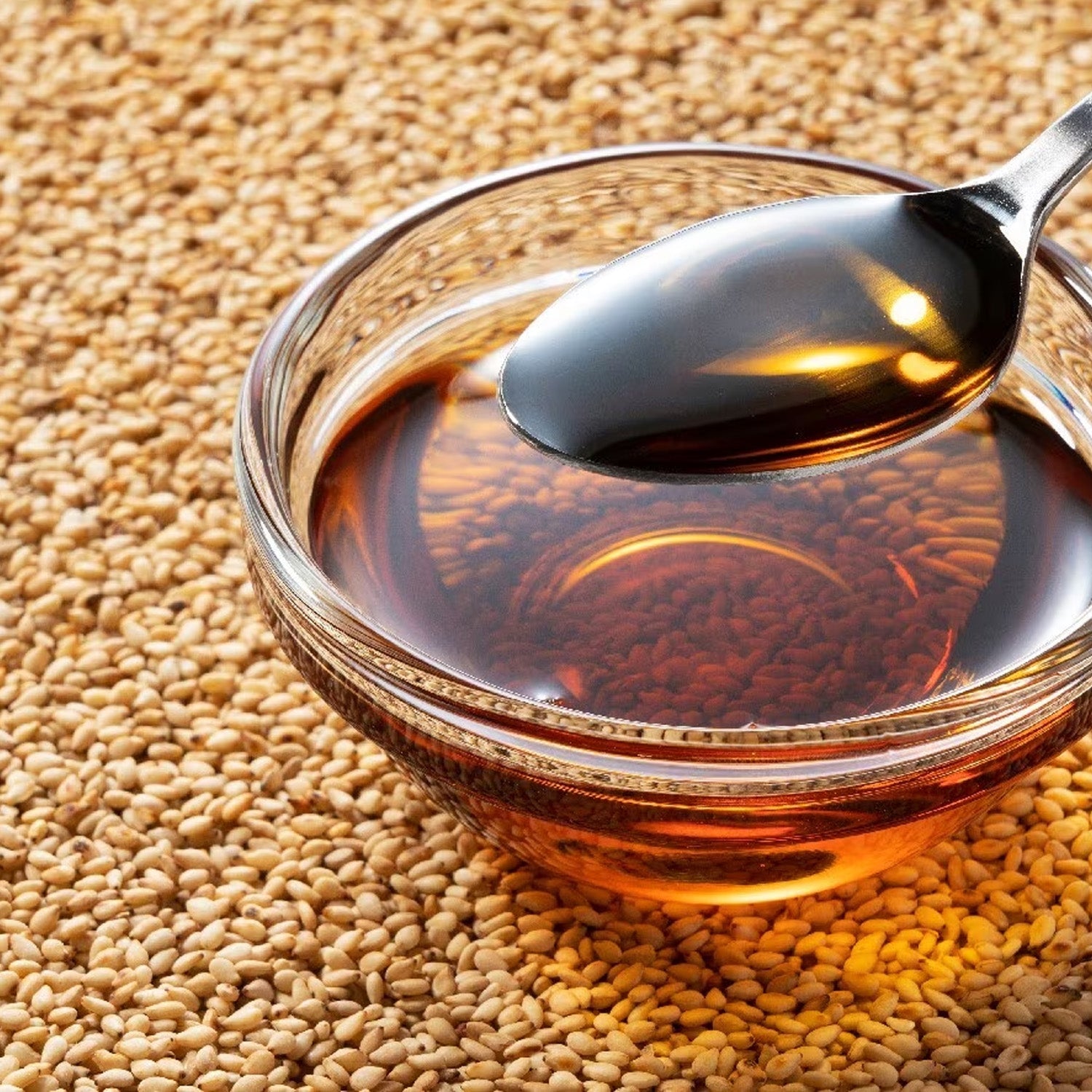
Benefits of Sesame Oil: Health and Cooking at its Best
The numerous benefits and uses of sesame oil in cooking, personal care and health. Learn how to take advantage of its antioxidant and anti-inflammatory properties.
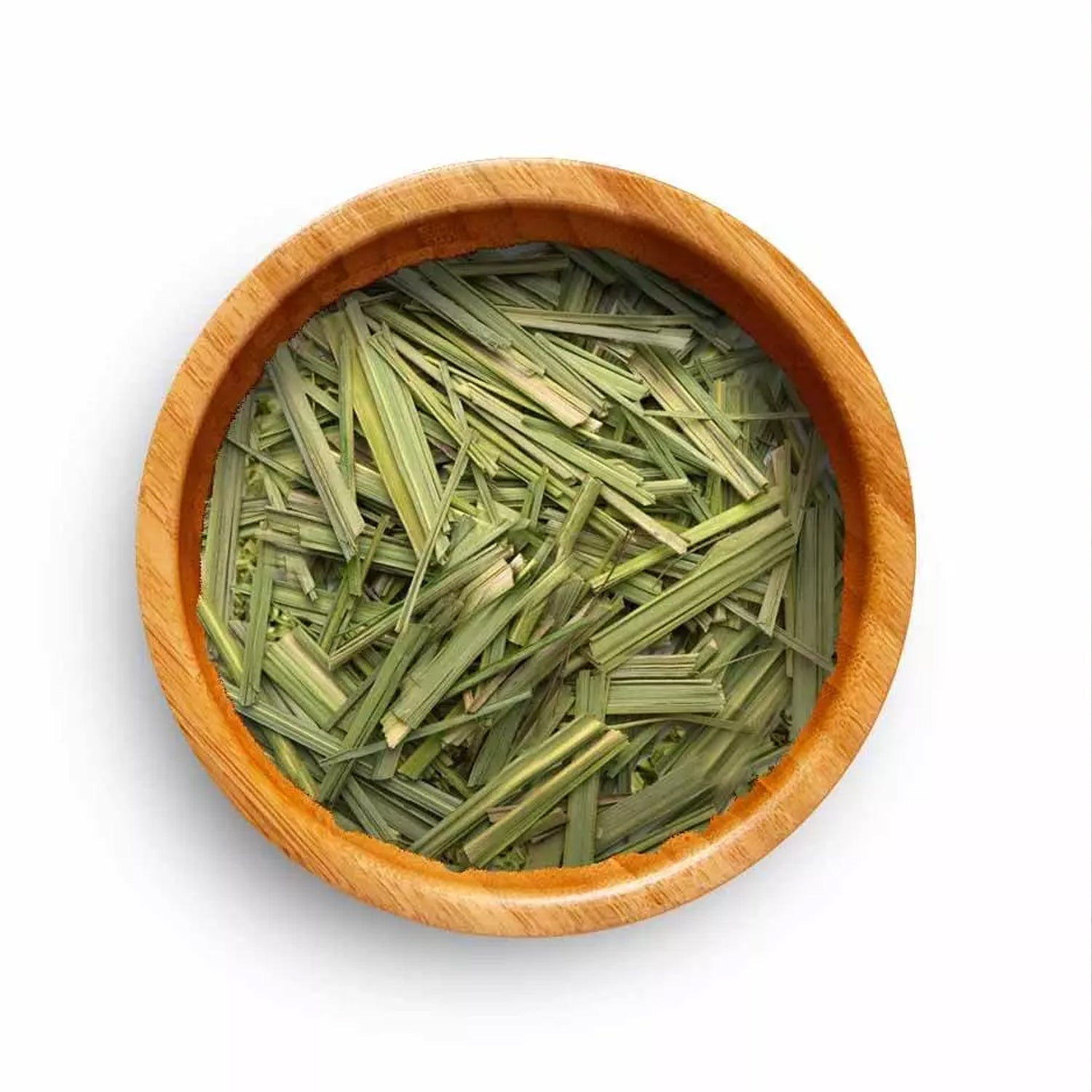
Benefits of Lemon Grass: Culinary and Medicinal Uses
Lemon Grass can transform your favorite dishes and improve your health. Learn about its culinary uses, medicinal benefits, and featured recipes to incorporate this versatile plant into your daily l...
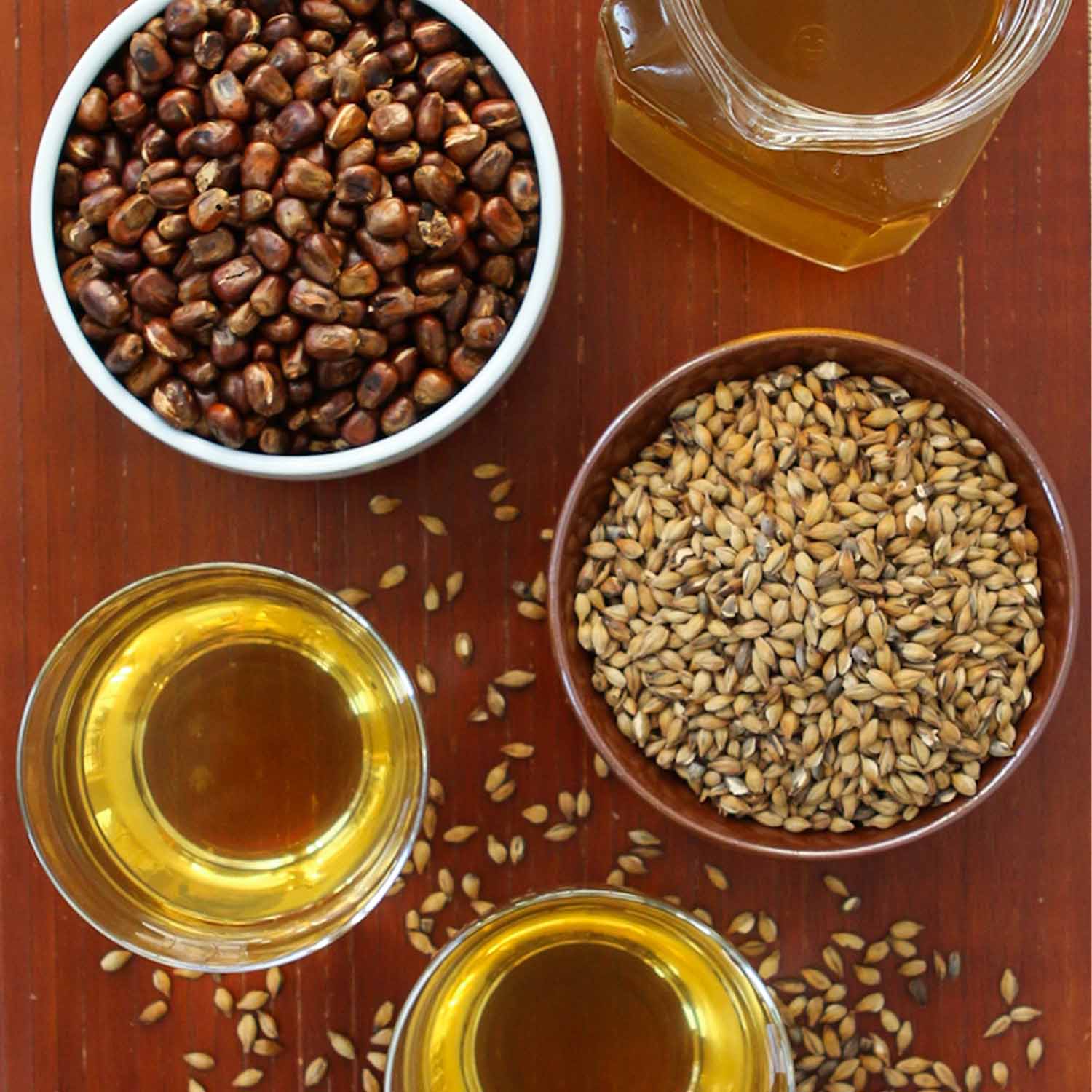
Korean Barley Tea: Tradition and Health in Every Cup
Korean barley tea, known as bori-cha. Learn about its origin, health benefits and how to prepare it at home. A caffeine-free drink rich in antioxidants. Discover the tradition and benefits of this ...

